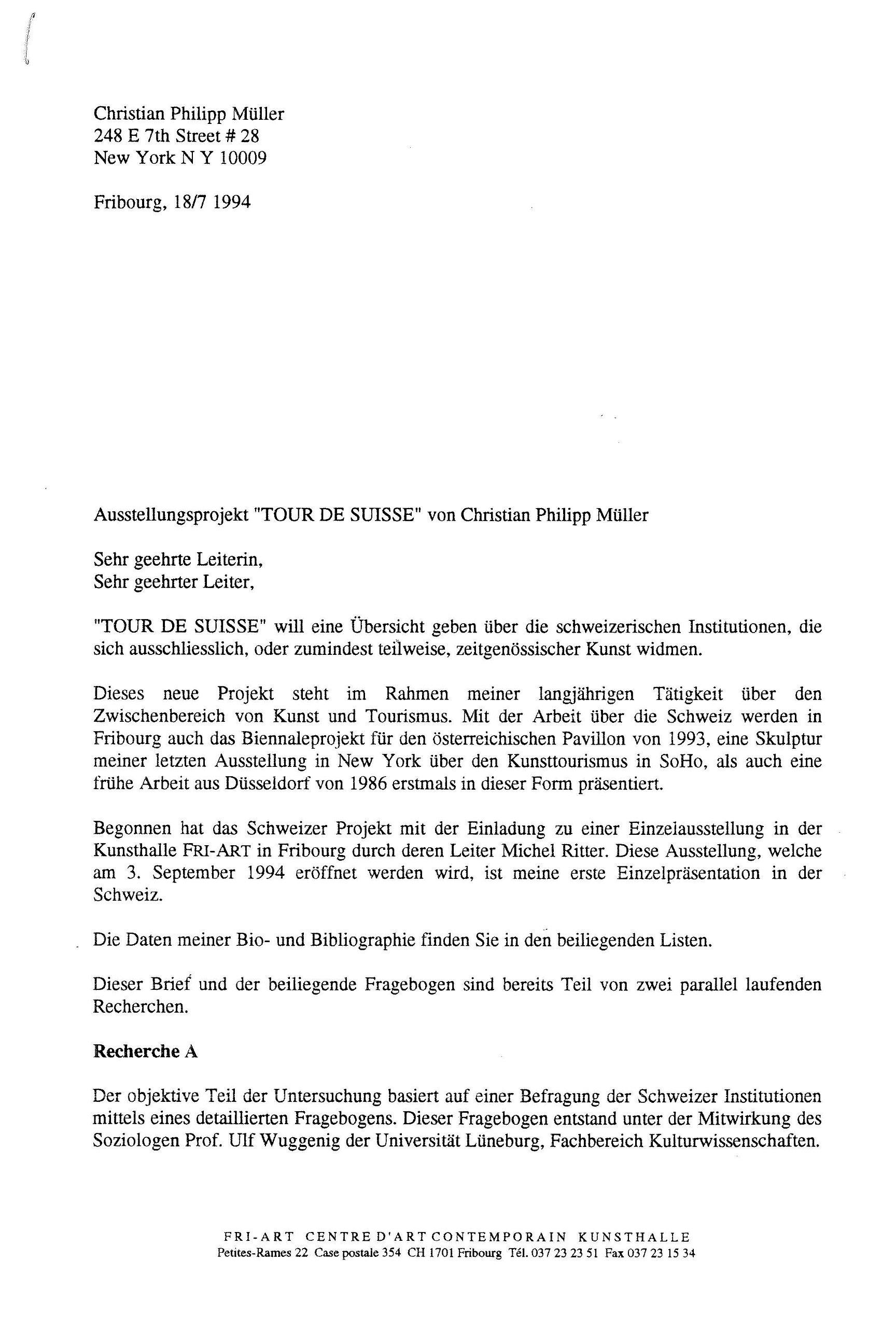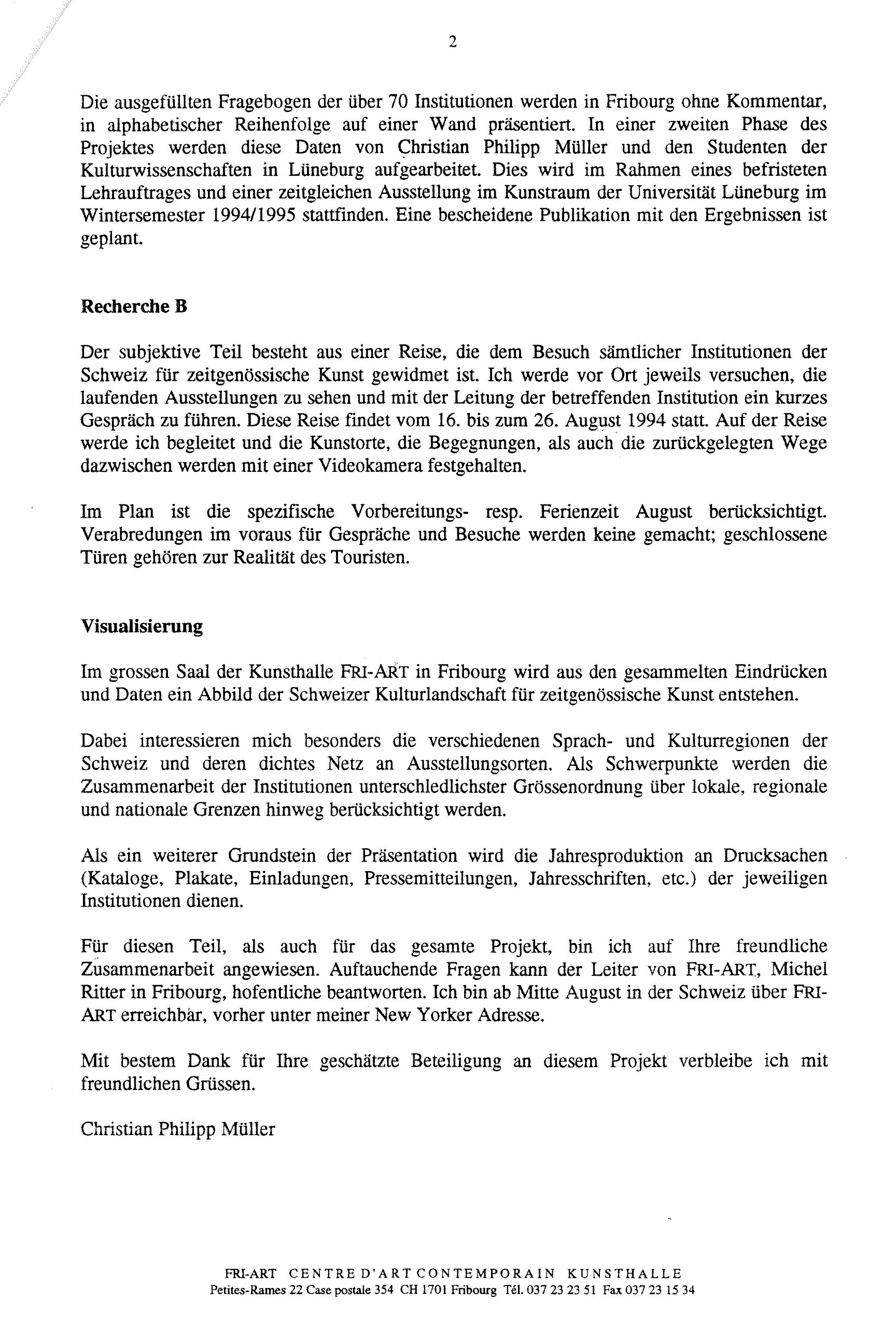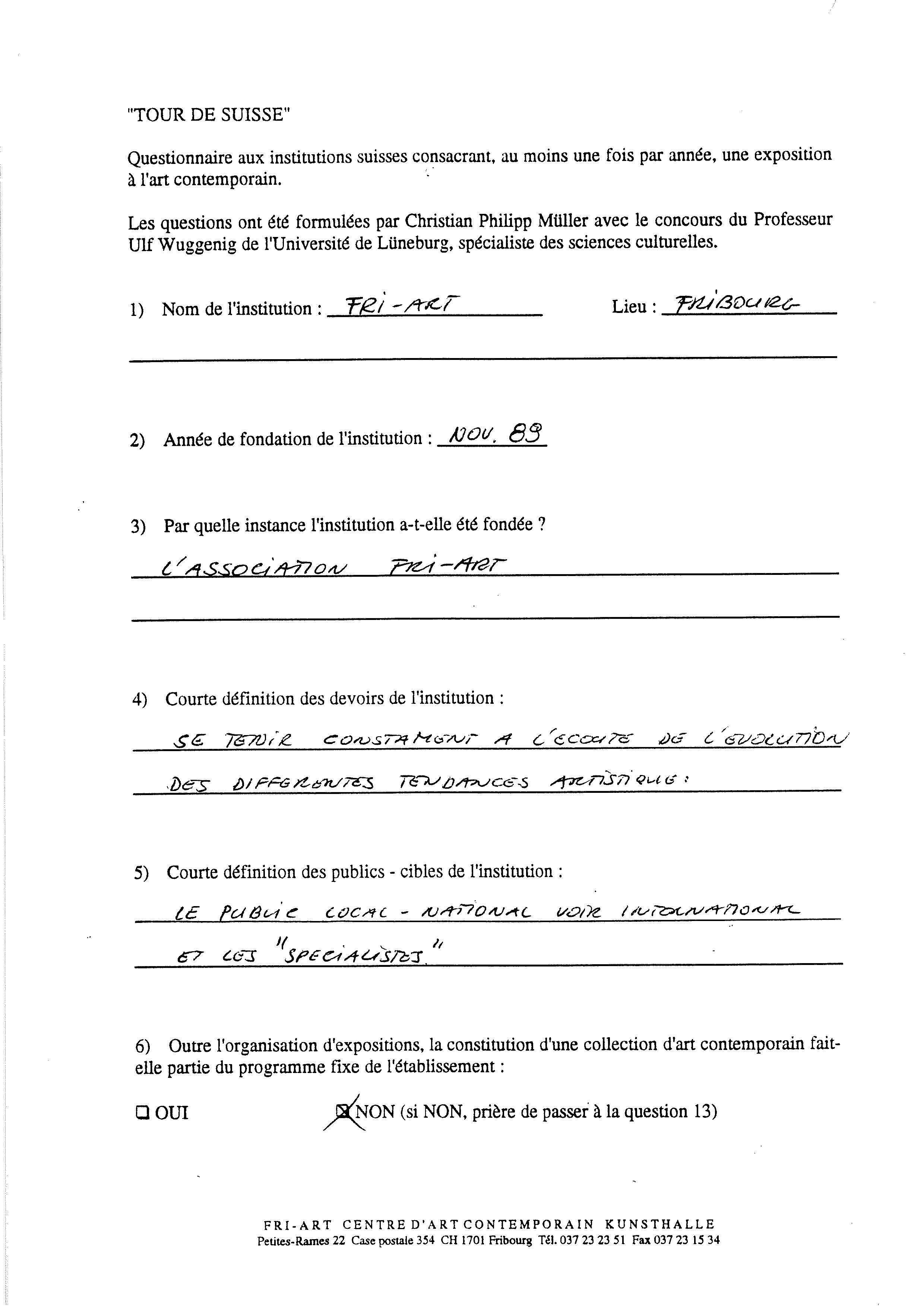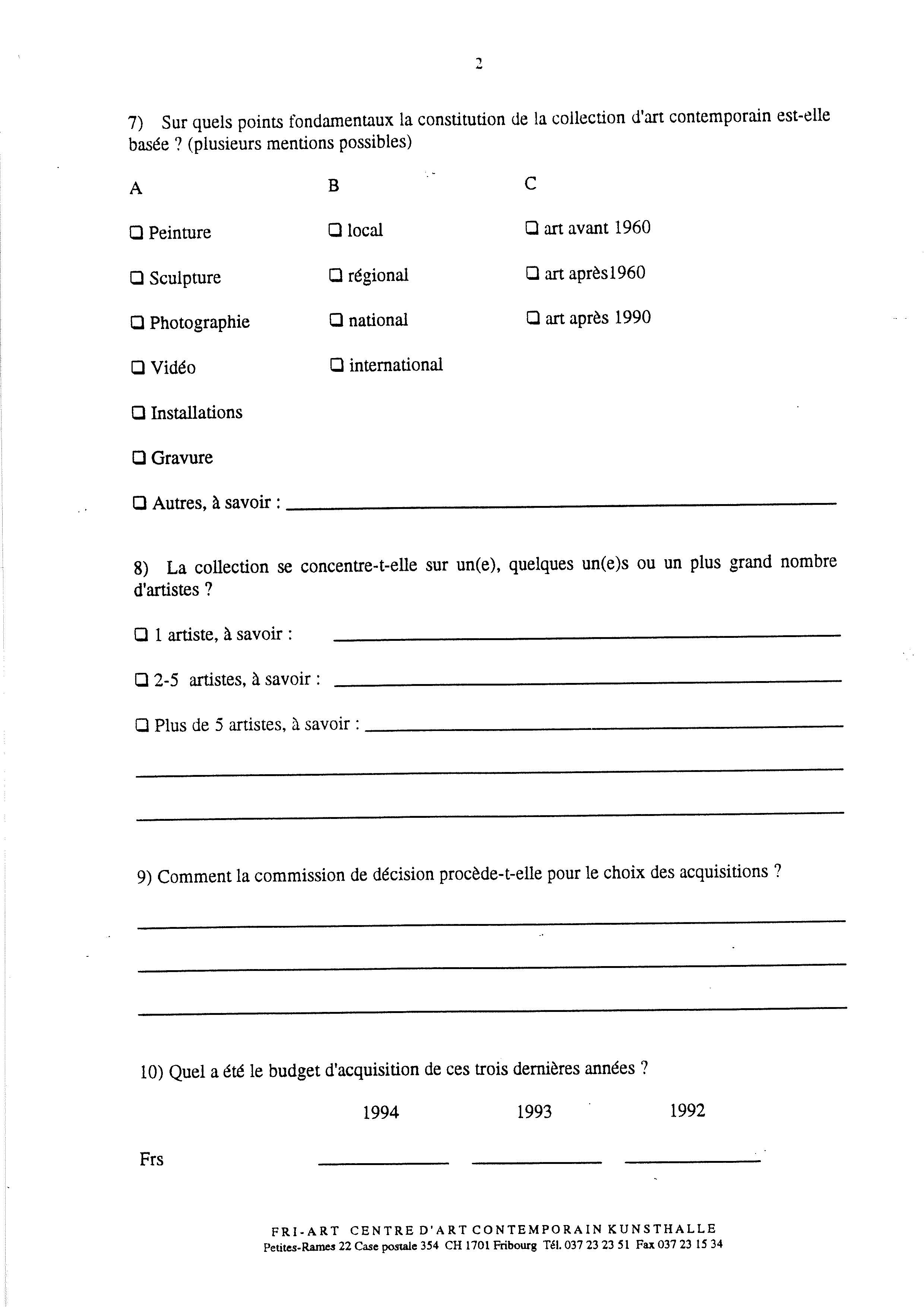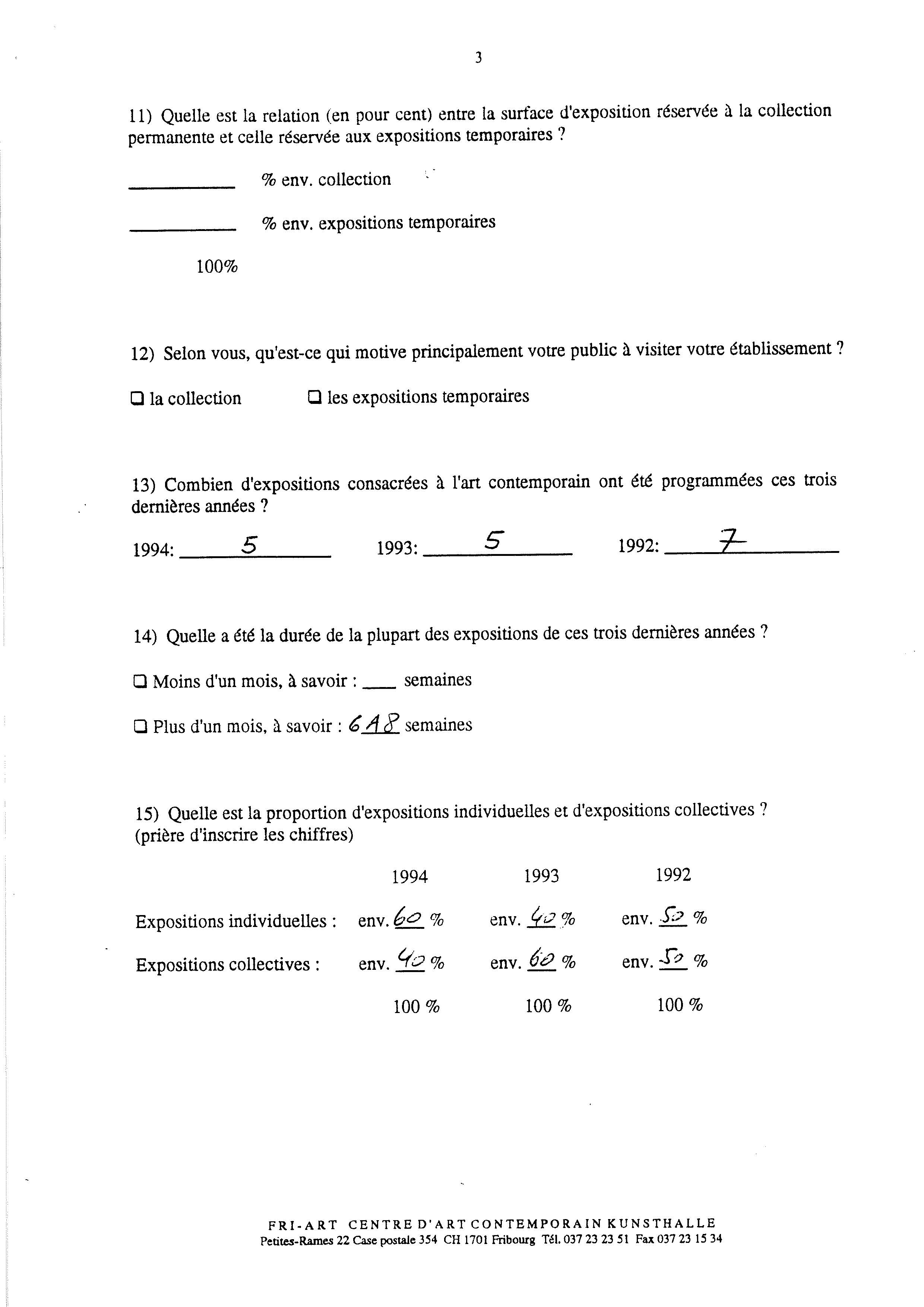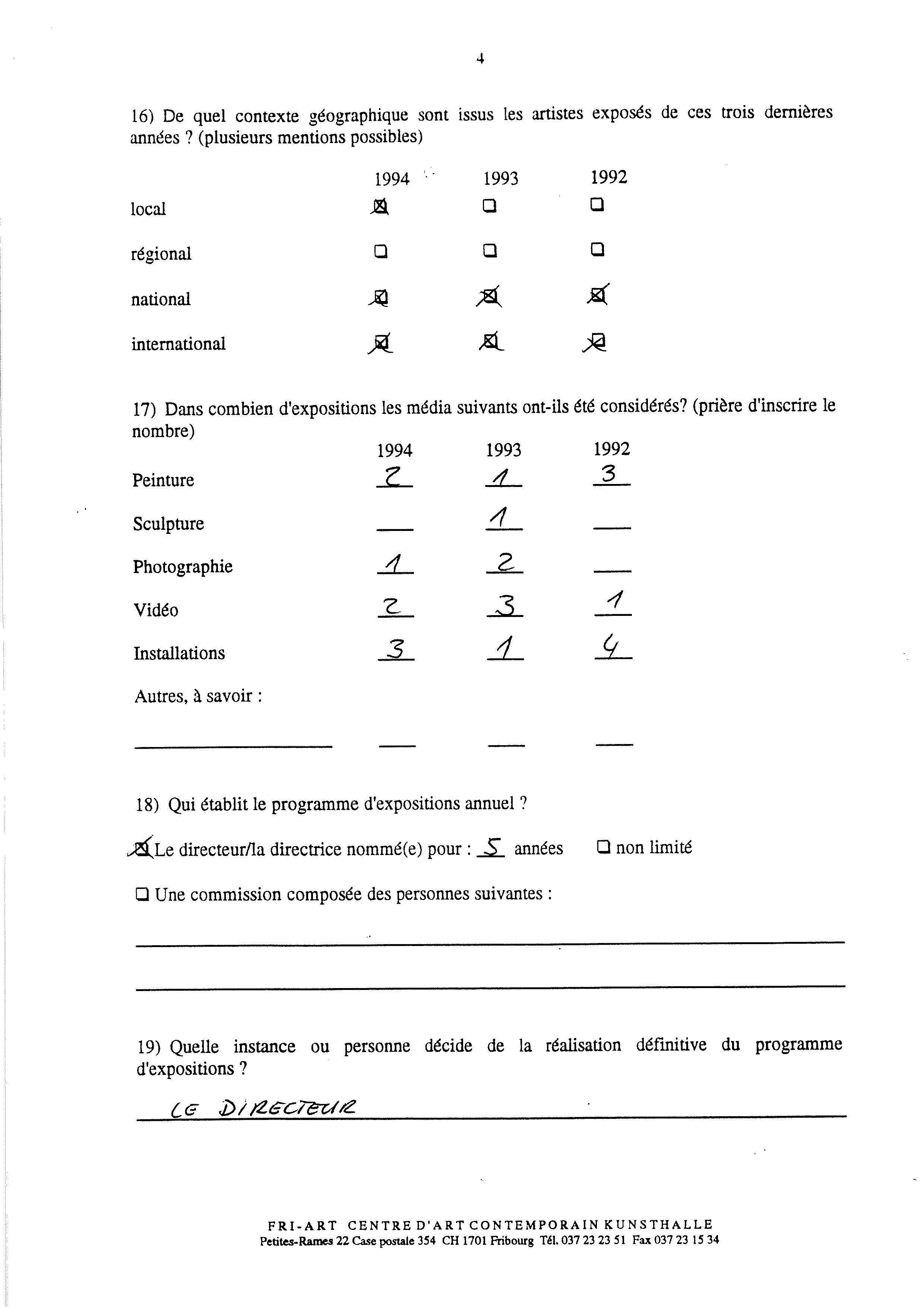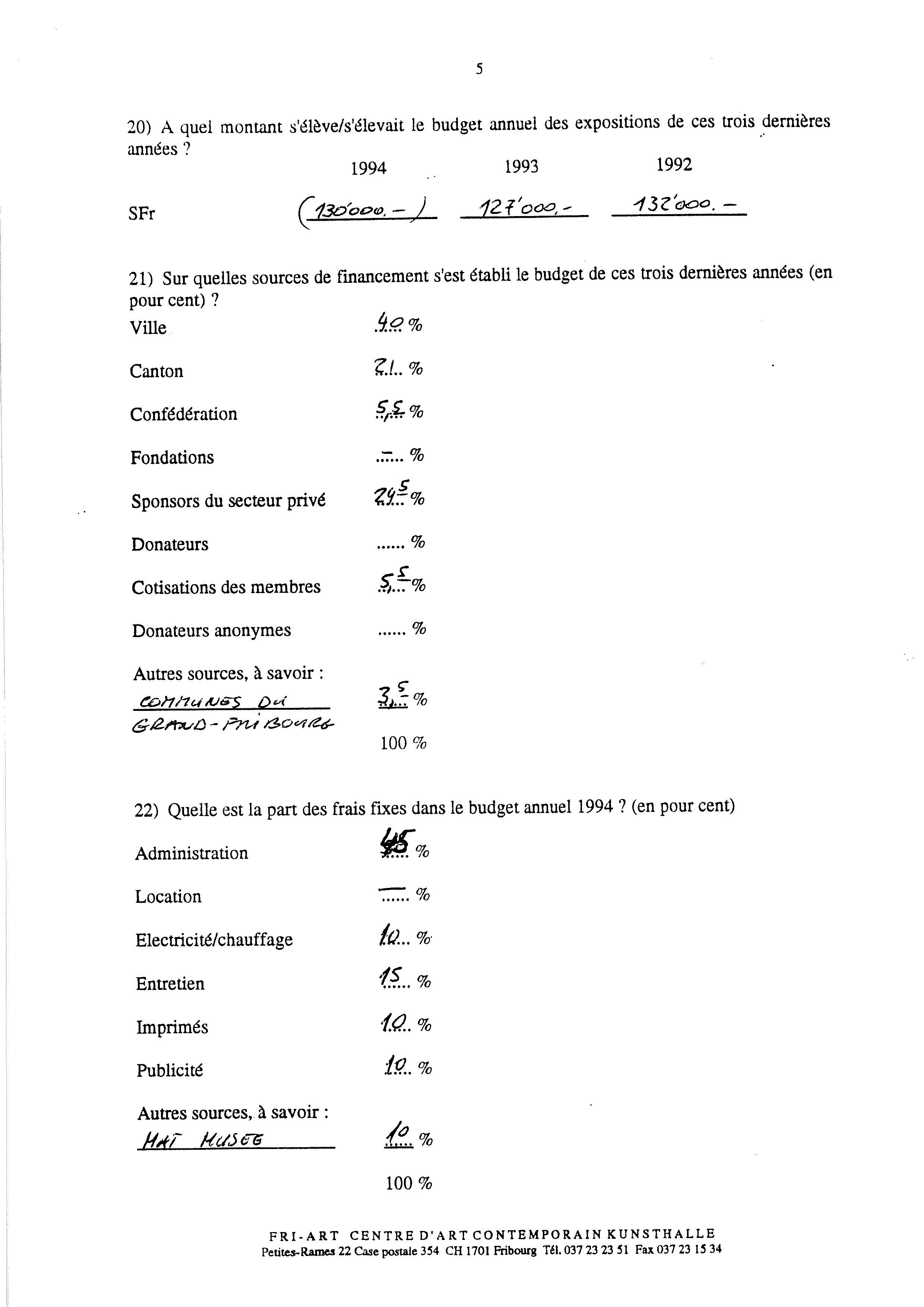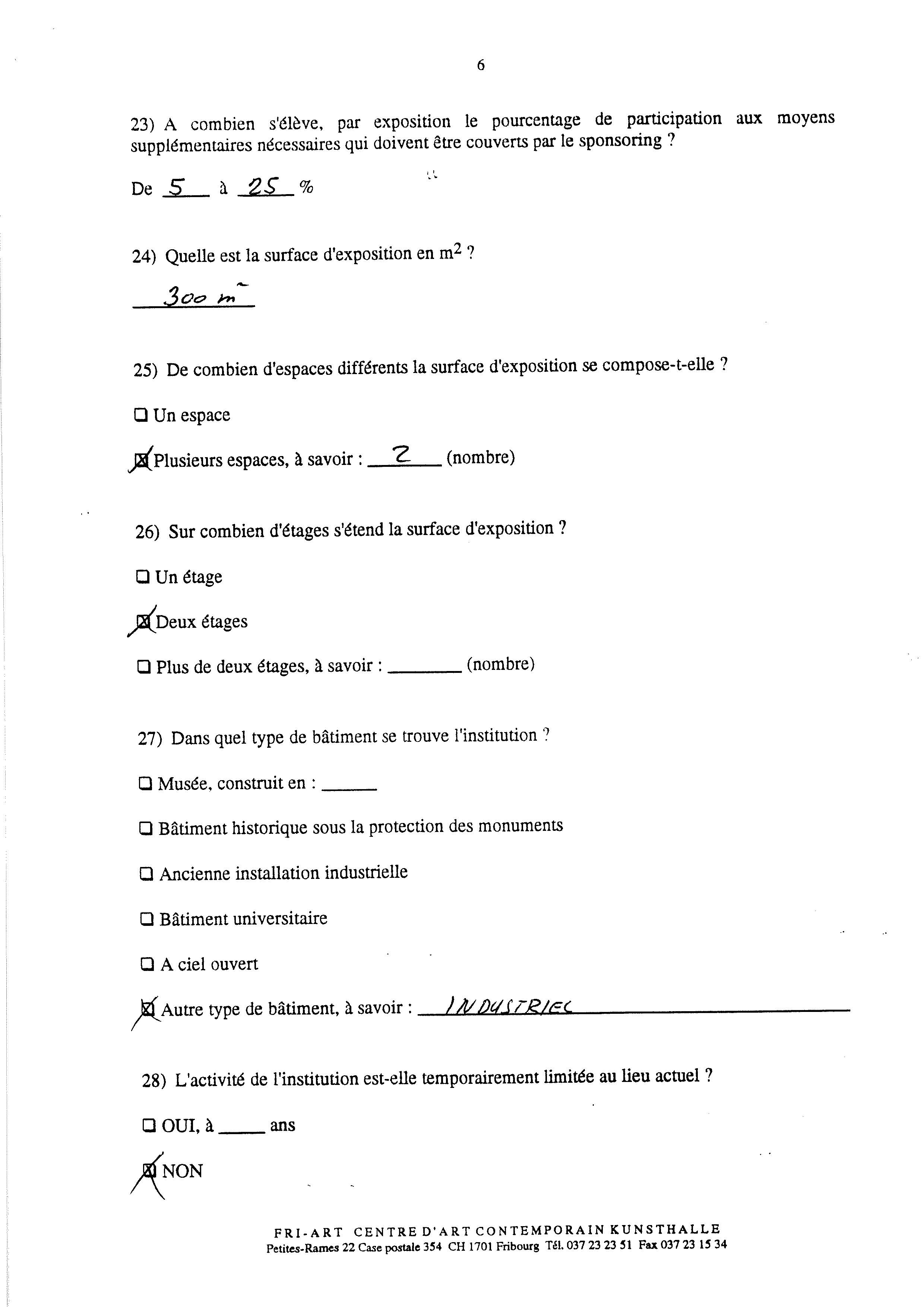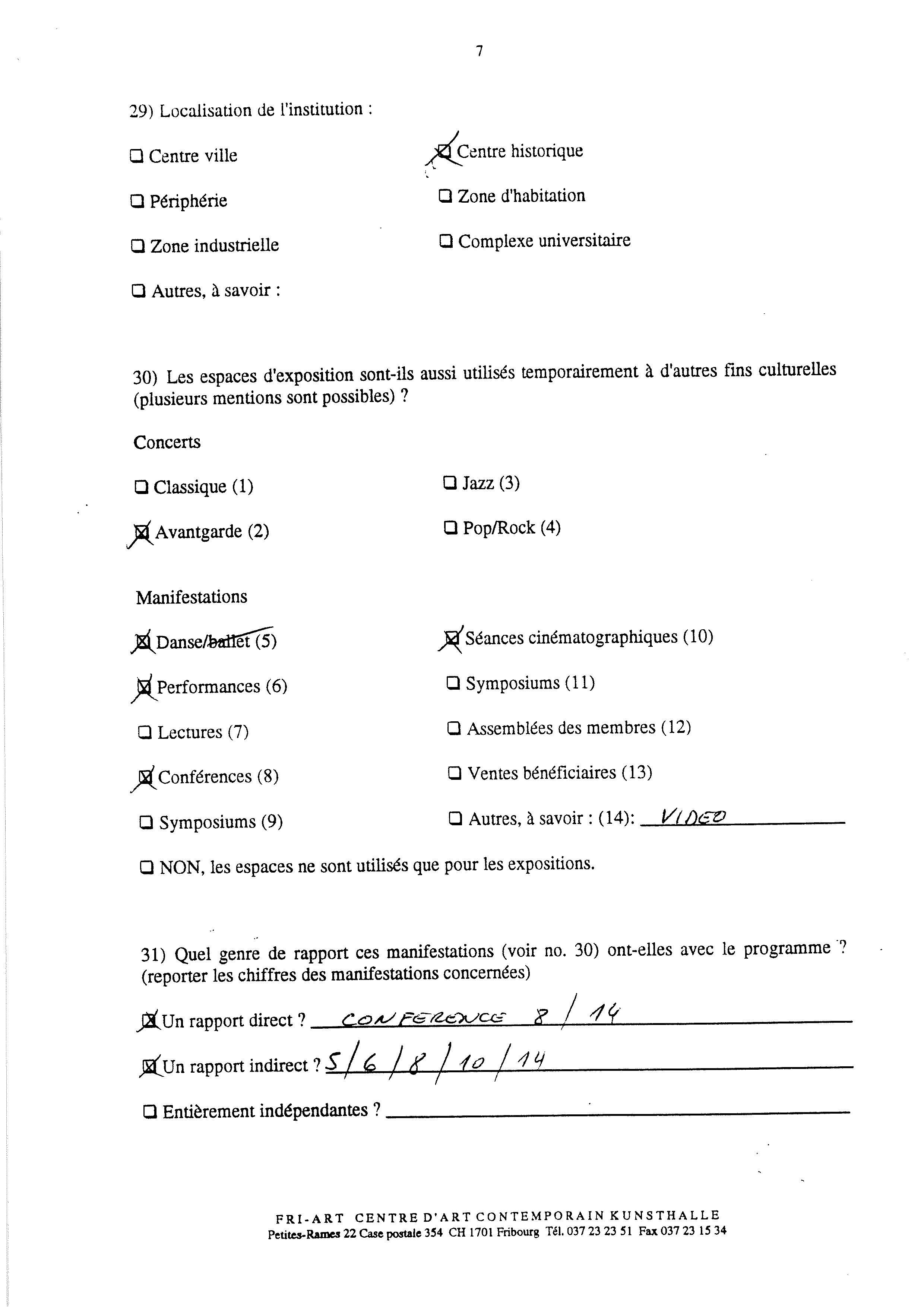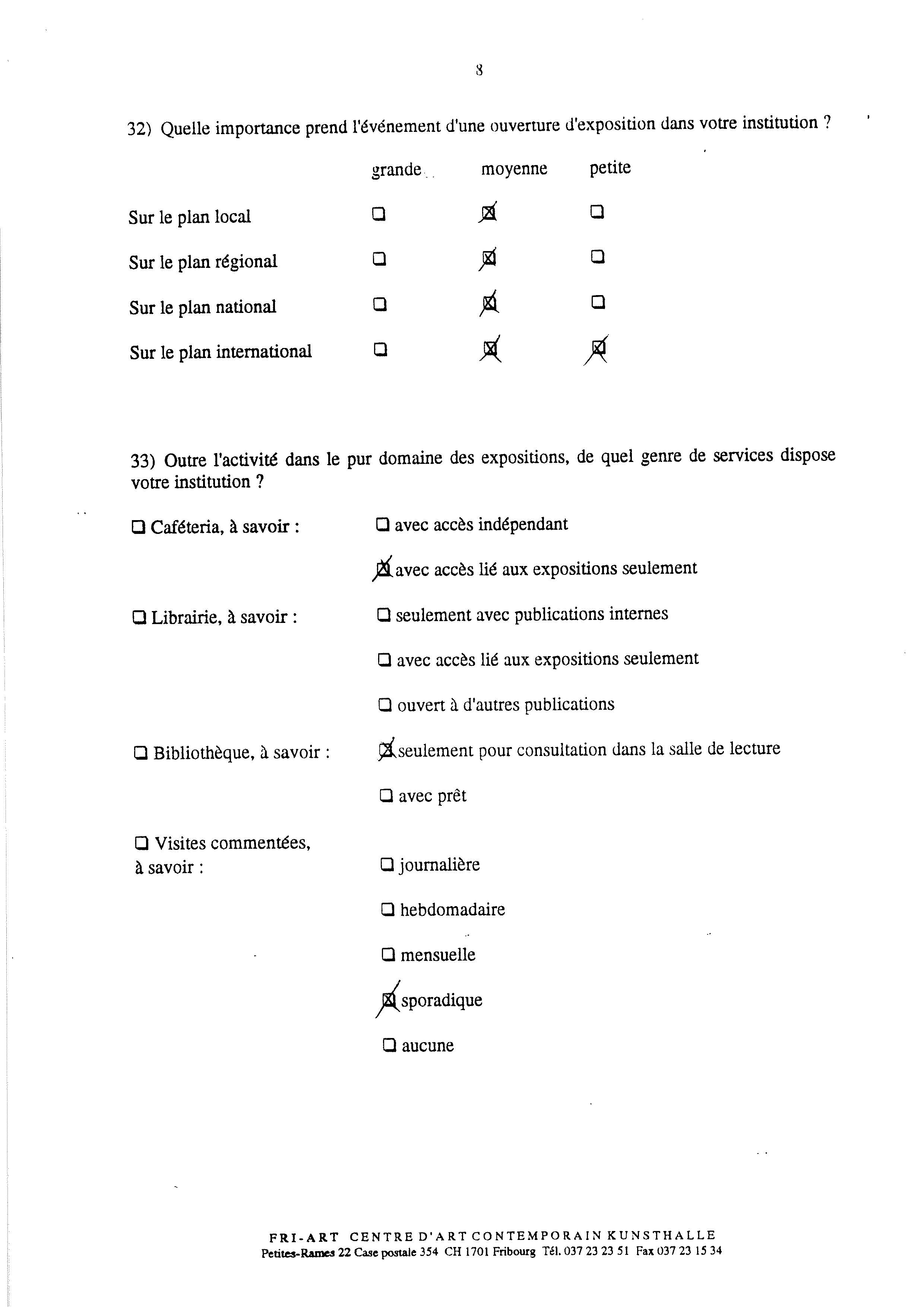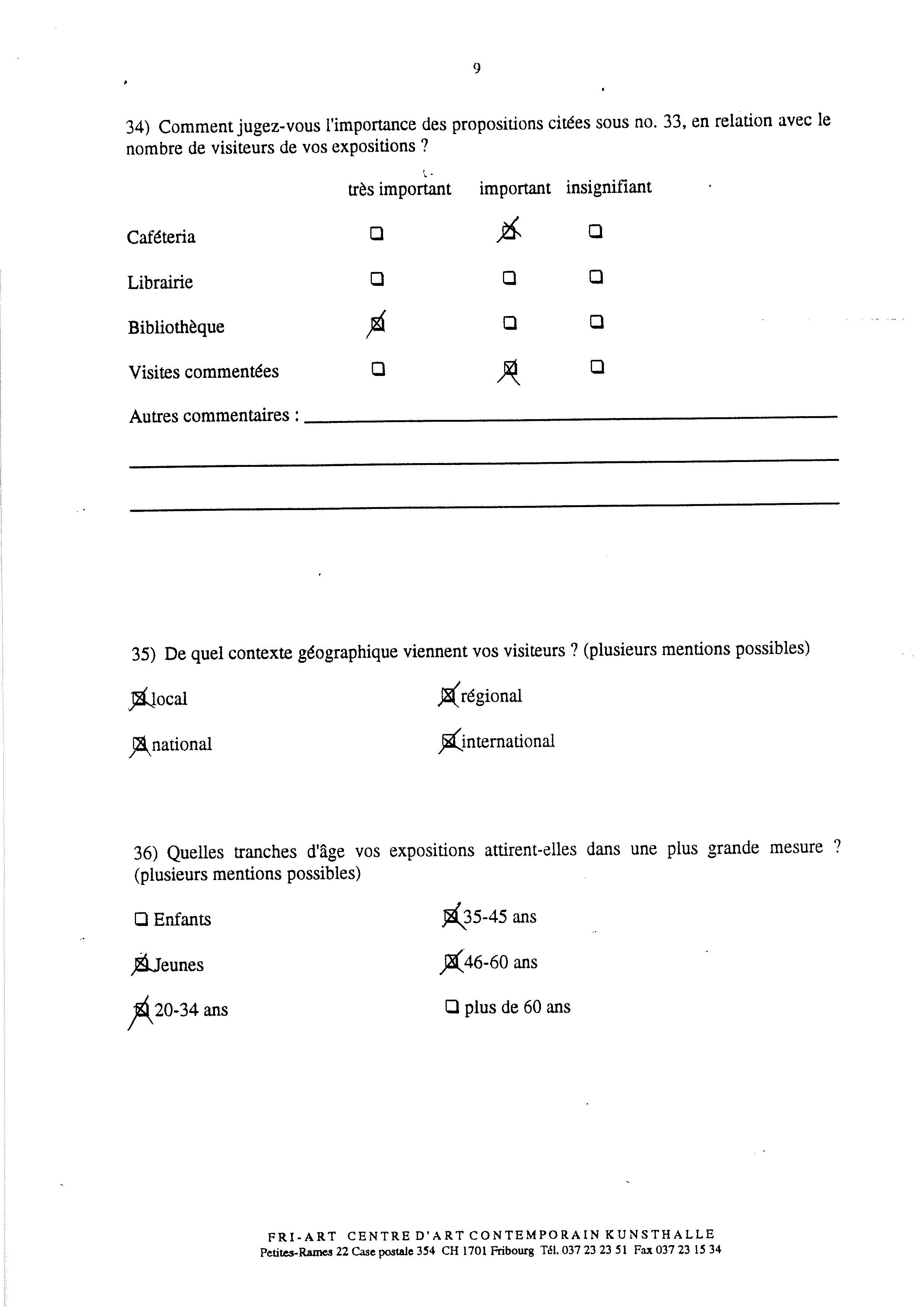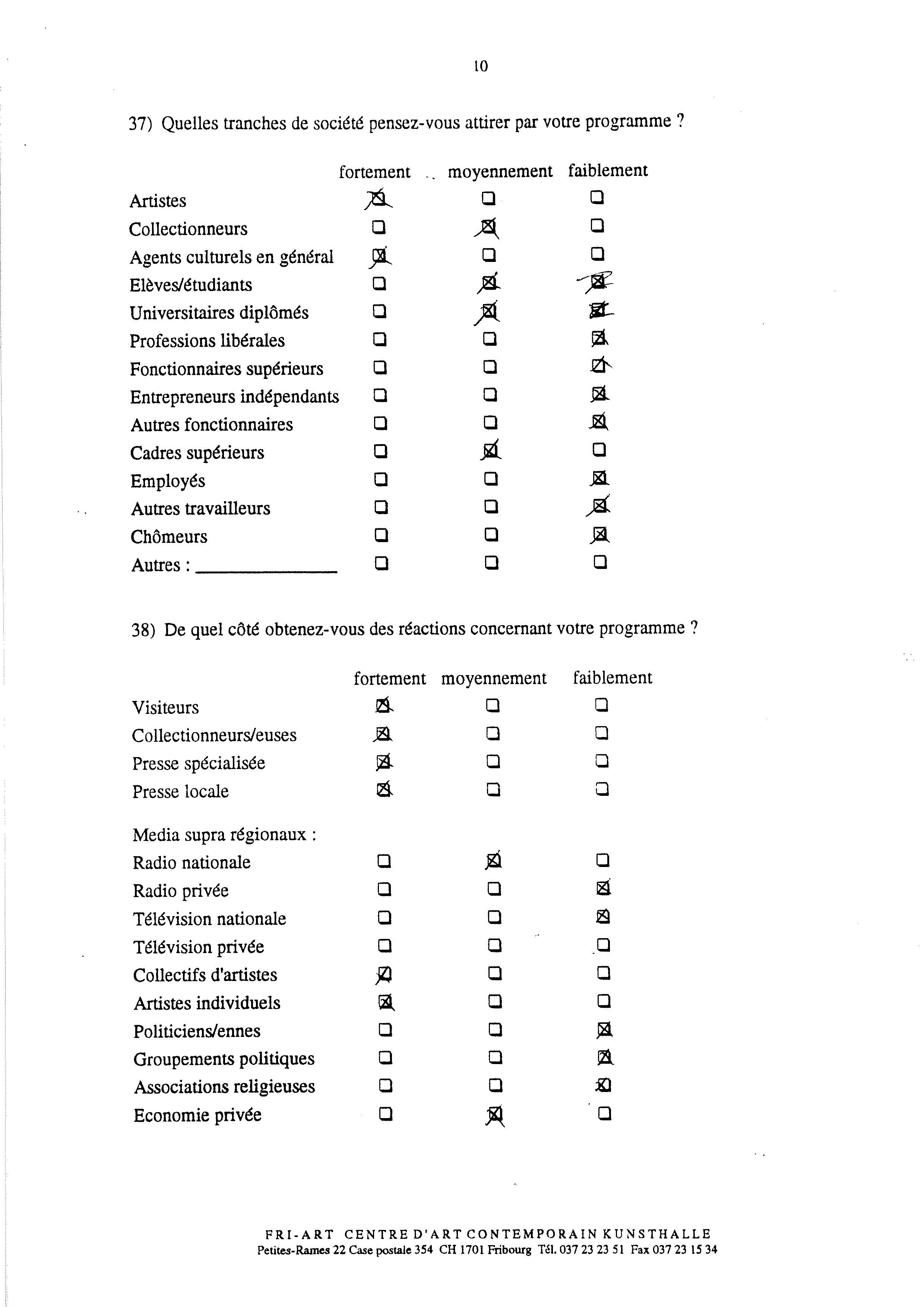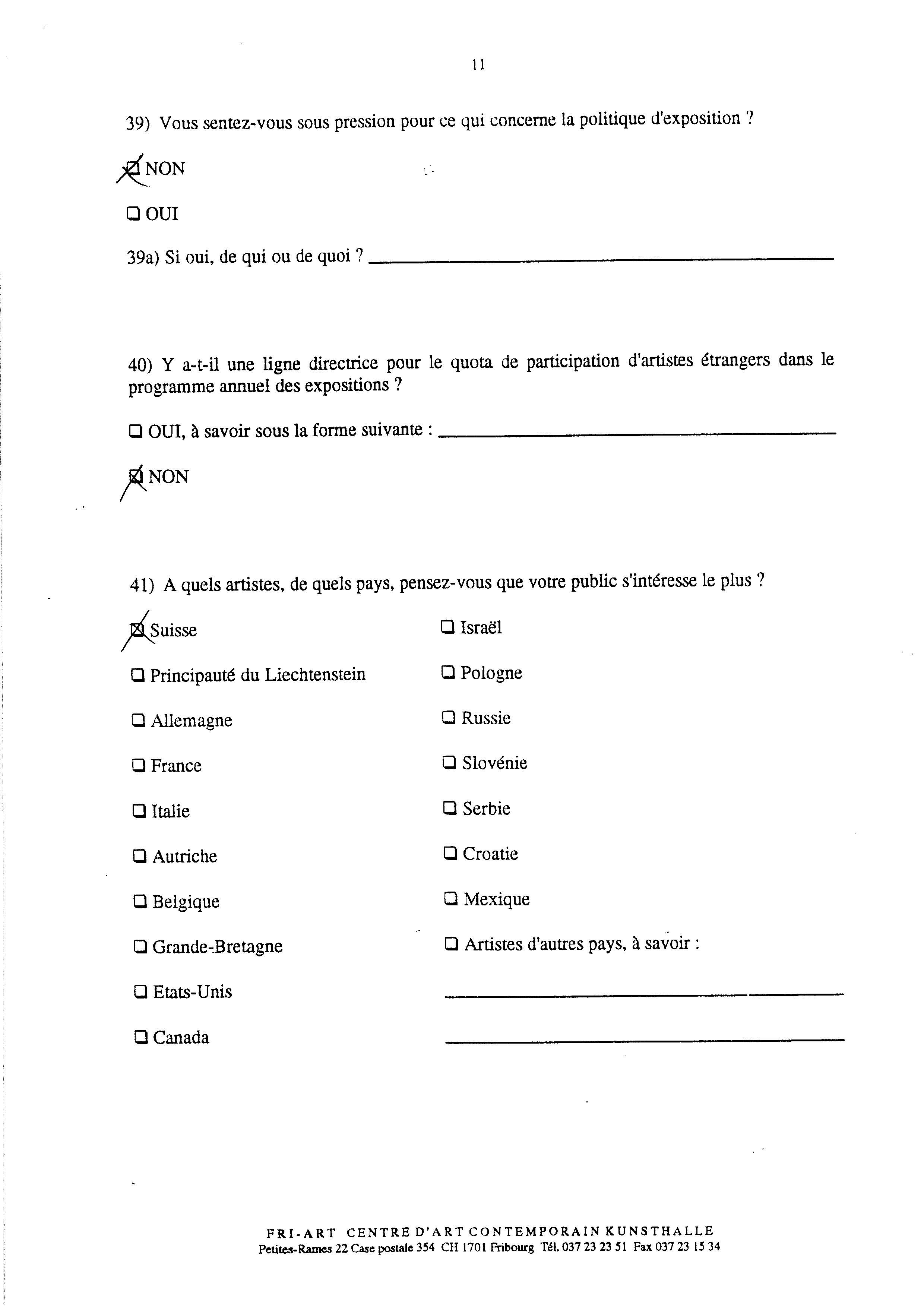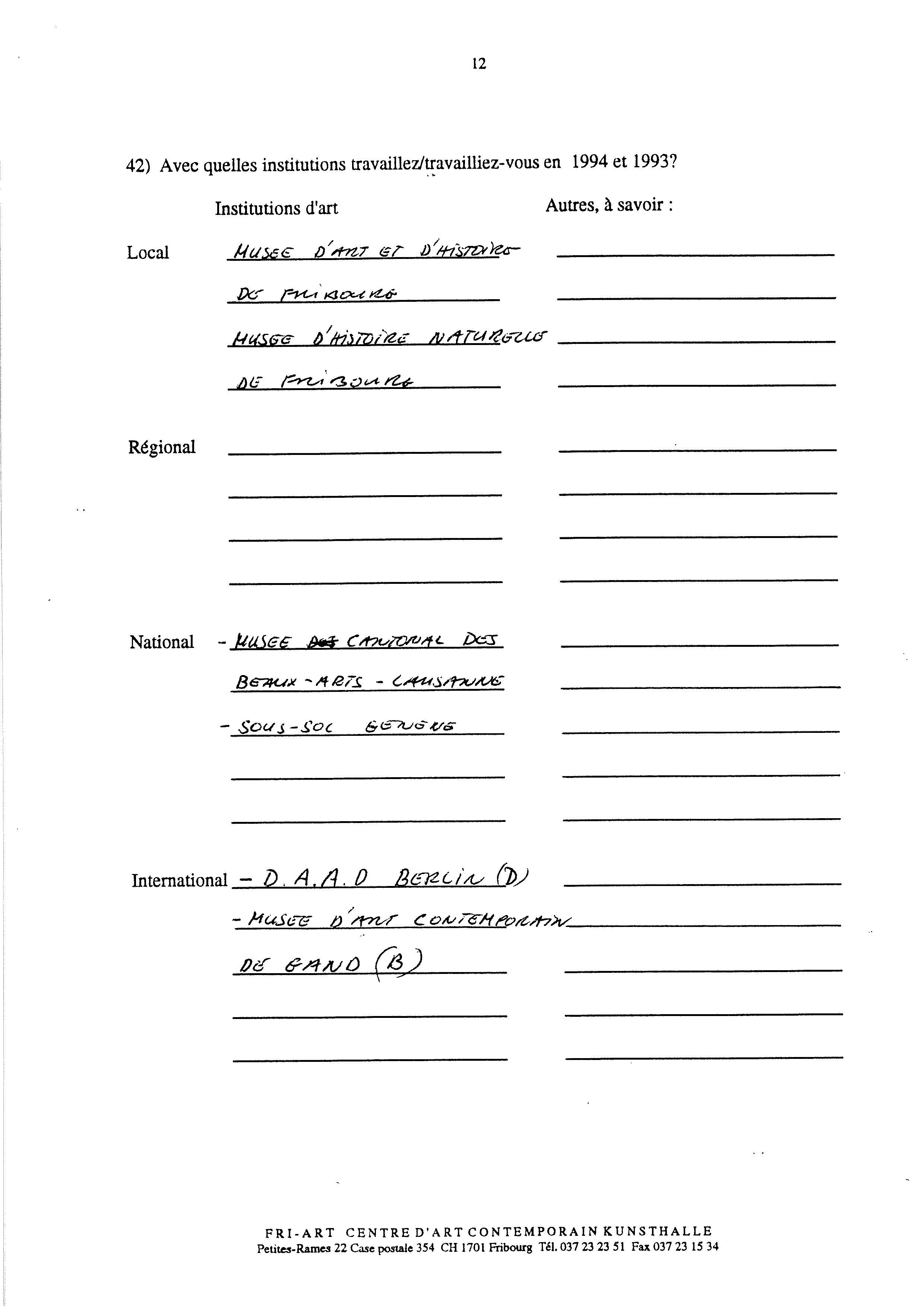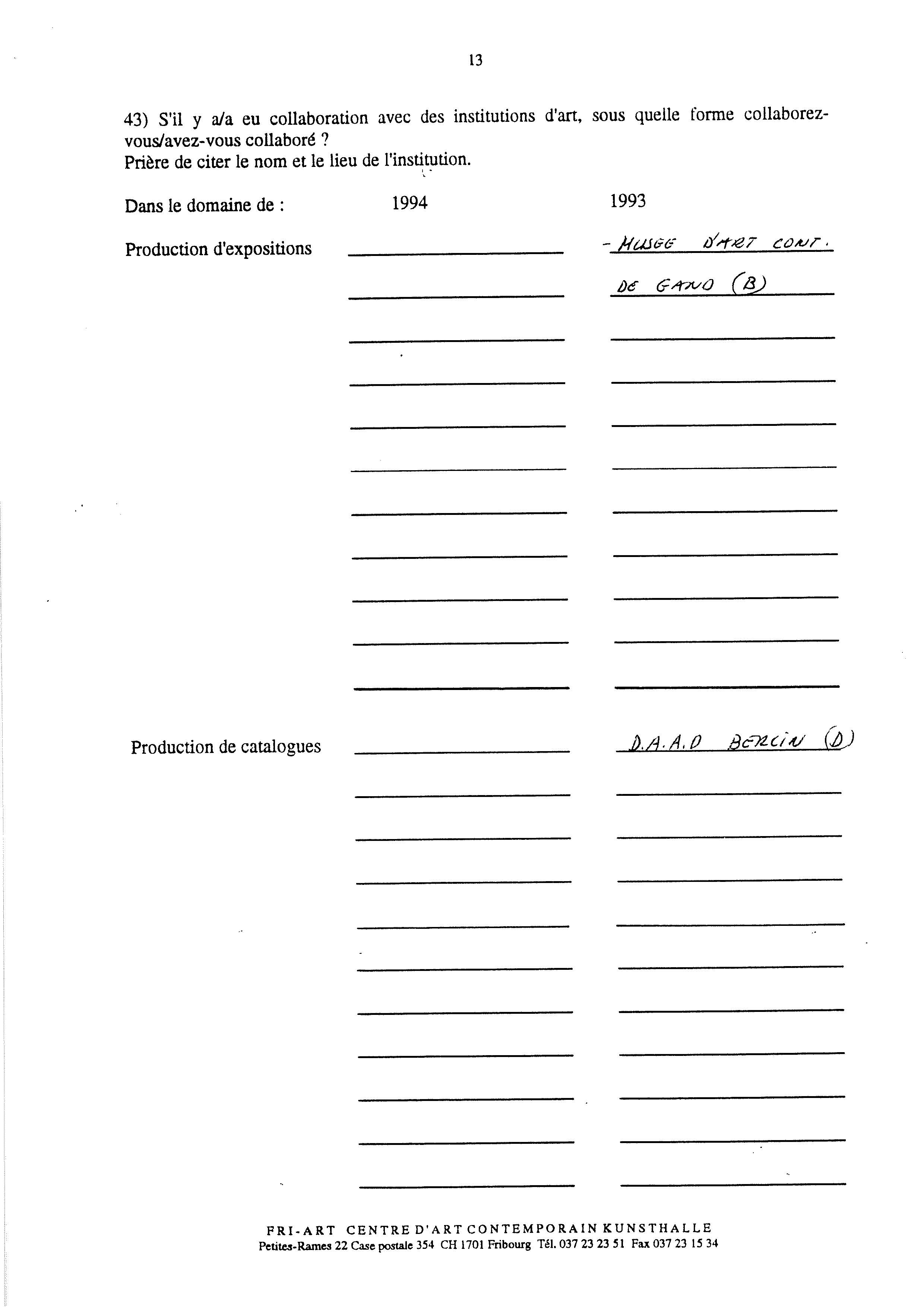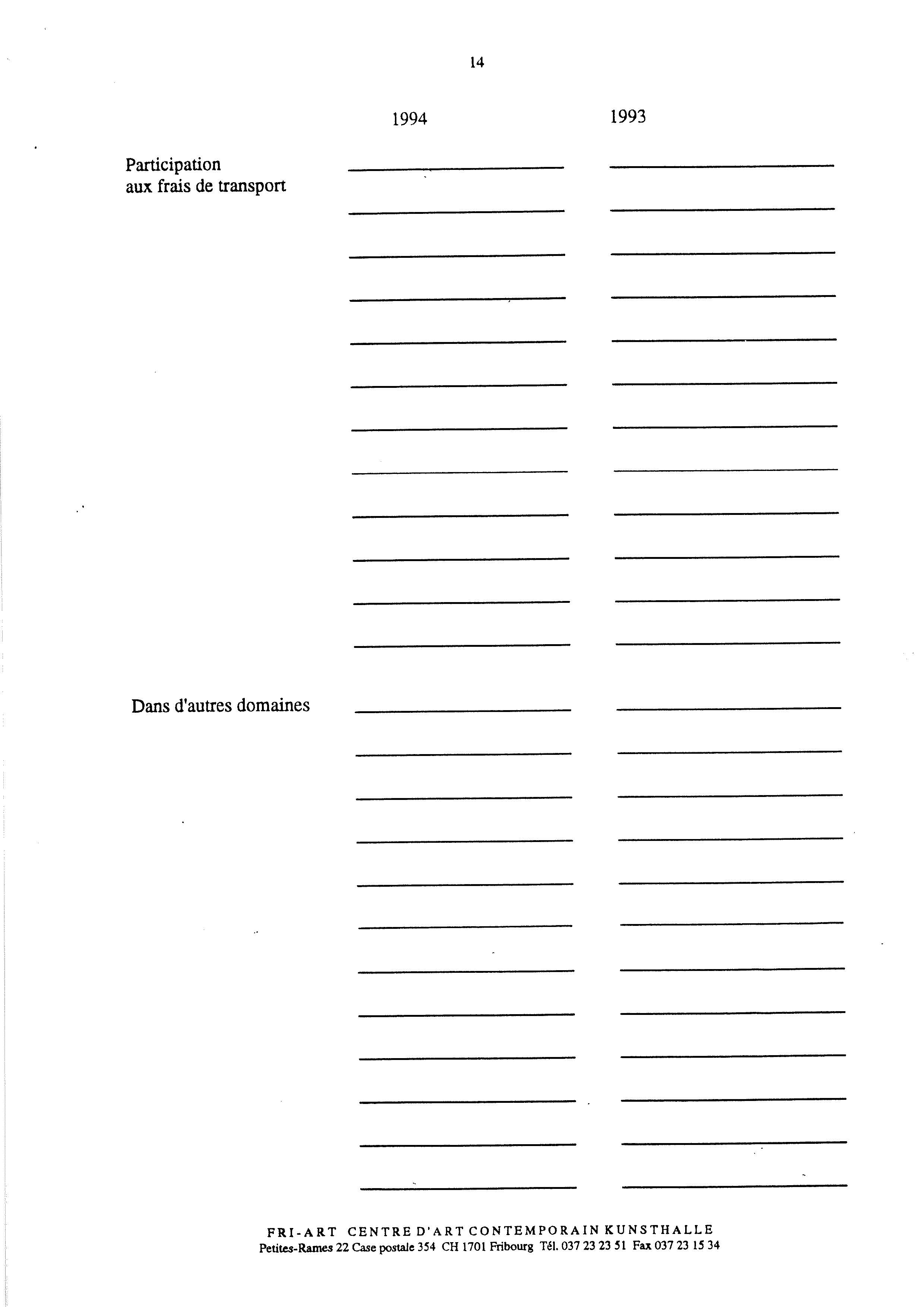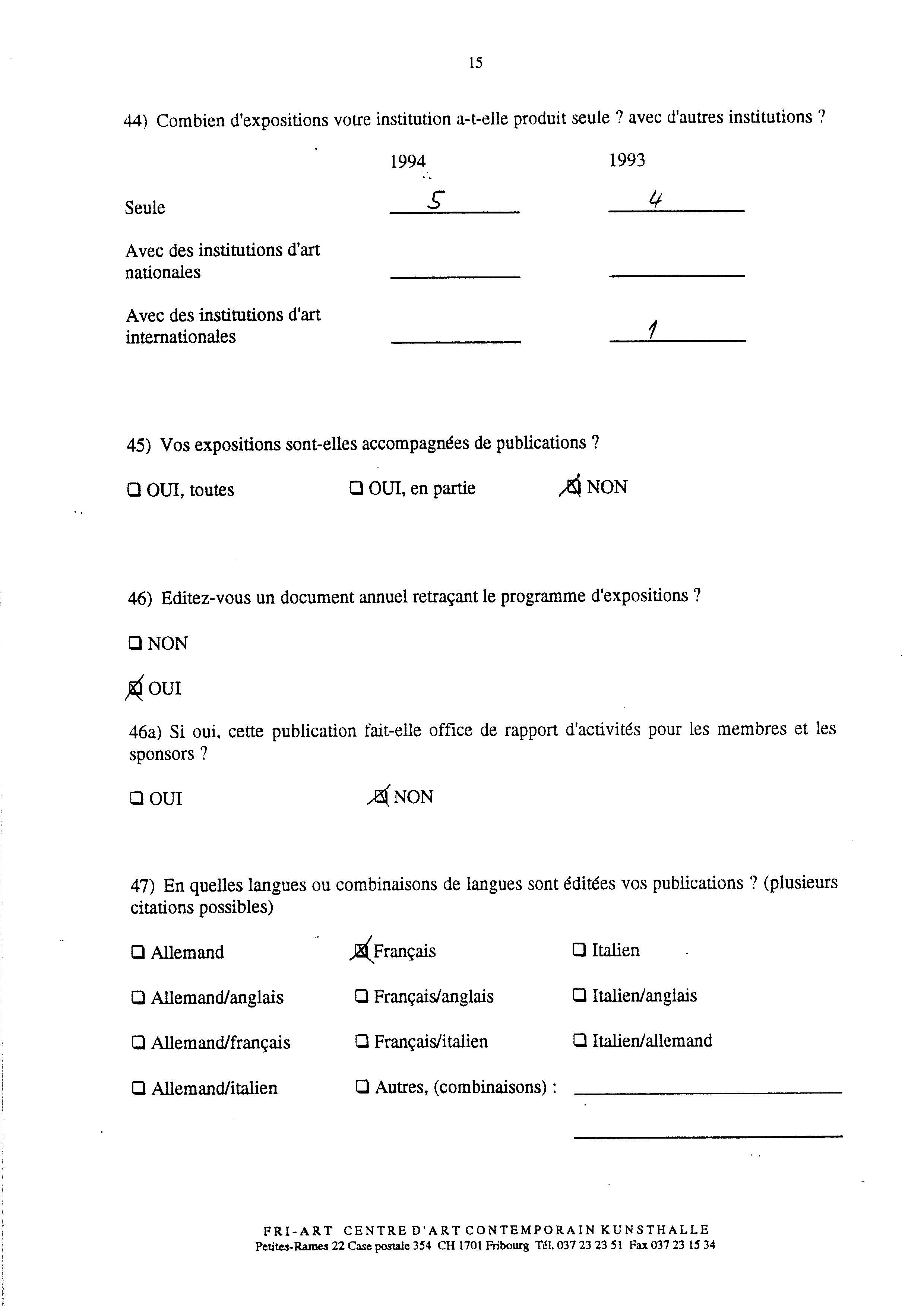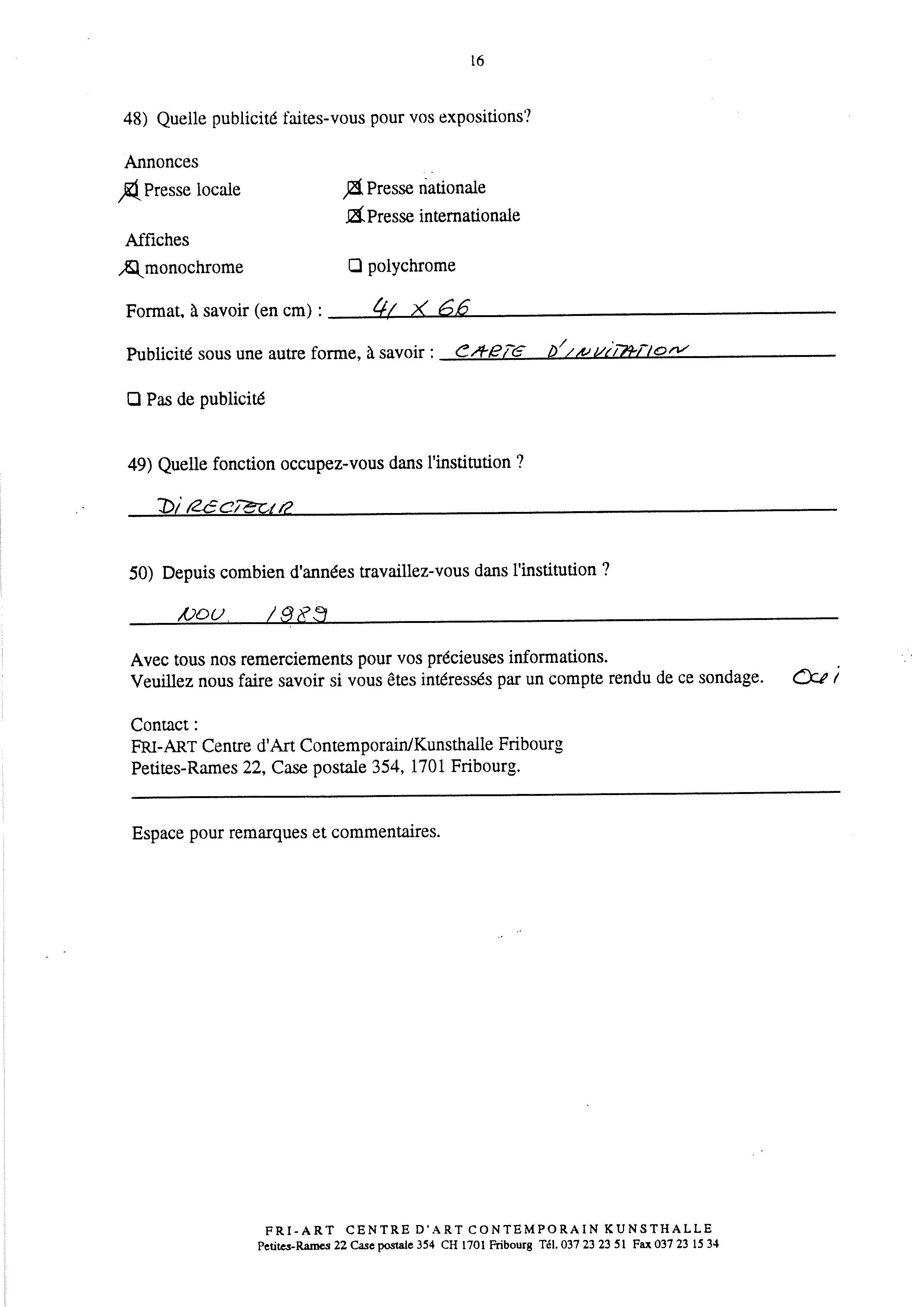1994: Christian Philipp Müller, Tour de Suisse
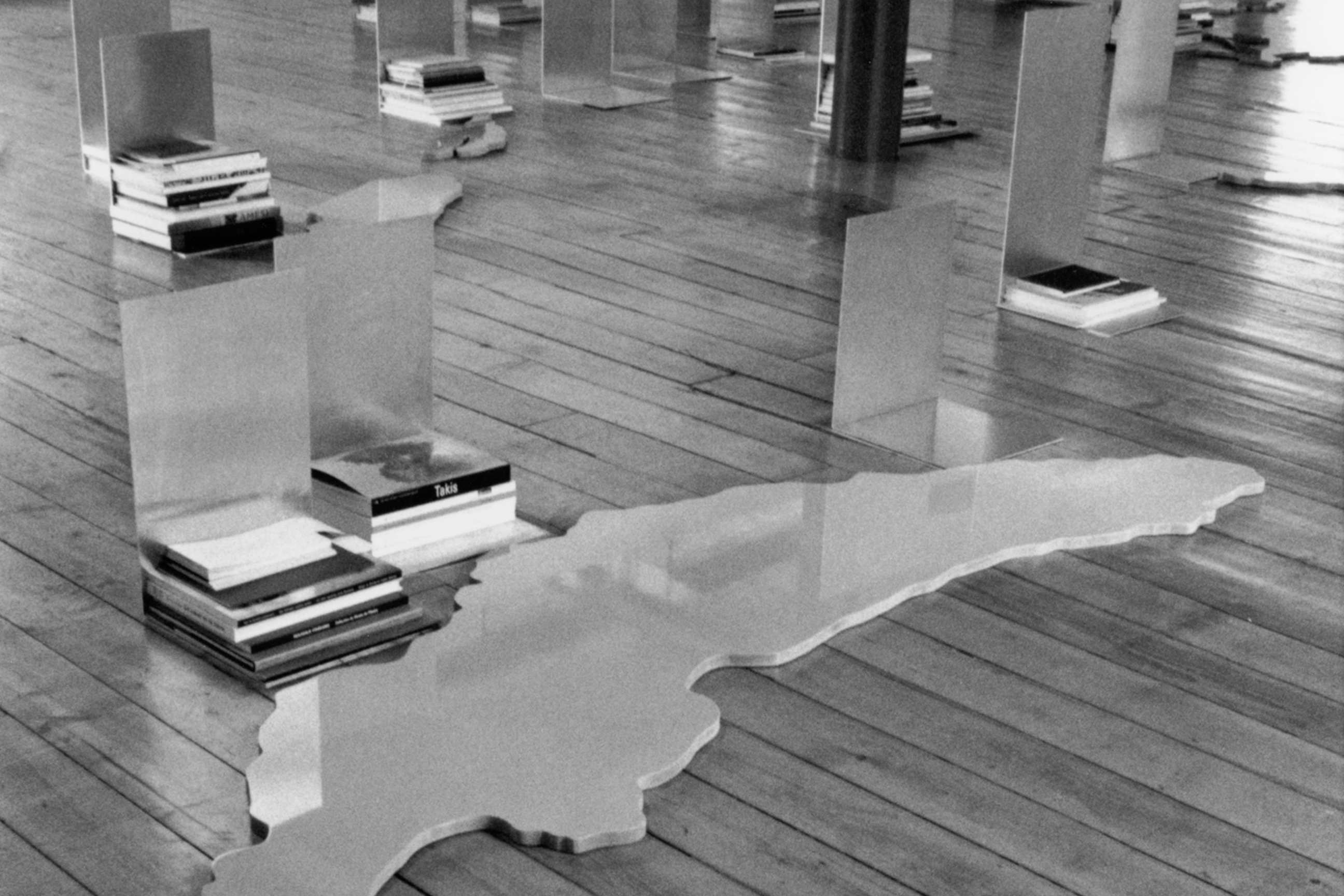
Instead of climbing on a racing bike, Michel Ritter and the Swiss artist Christian Philipp Müller took the wheel to do their Tour de Suisse in the summer of 1994. They travelled the length and breadth of the country for two weeks, as if in a tourist frenzy, visiting 60 institutions hosting at least one annual contemporary art exhibition. Throughout the tour they recorded their impressions on video. They interviewed museum directors and got them to fill in questionnaires. The data and impressions they gathered were then presented at the Friart Kunsthalle. The exhibition then moved to New York and Lunebourg (Germany), adapted and developed by Müller according to the conditions of the places chosen for the exhibition. The involvement of process in Müller’s work was in evidence here along with the significance, evident in the work, of the chosen exhibition sites, whether in terms of the buildings or art scenes.
With Tour de Suisse Müller wished to put the art scene across the country on display and highlight the relationships between artistic institutions. This practice is known as “contextual art” because it underlines the importance of context, of the cultural, social, political and economic conditions in artistic creation. Since the 1960s, its representatives have proposed an œuvre that cannot be considered in isolation from the social context of its genesis. In the 1990s, certain artists, including Müller, made the extended context of art the principal subject of their work. By bringing together traces of material and immaterial structures – images of exhibition spaces visited, ideas of museum directors or catalogues –, Müller made the Swiss art scene visible to visitors.
At the same time, he also lifted a veil on his artistic practice which was reminiscent of the field research of ethnographers, another significant component of artistic practice in the 1990s. Art historian Hal Foster was to call the interest taken in ethnographic methods by artists turned pseudo-ethnographes the “ethnographic turning point”. Müller studied the Swiss art scene through the prism of his interviews and questionnaires, but instead of analysing the data and impressions gathered scientifically, he came up with an artistic statement, referring to the “impossibility of displaying the cultural present objectively”.
In the person of Müller, whose Tour de Suisse was his first solo exhibition in Switzerland, Friart brought to Fribourg an artist who exemplified the extension of artistic practice that took place in the 1990s. This was artistic practice by the artist-become-researcher, shedding light on the structures of contemporary art in intimate dialogue with each chosen exhibition space.
Text written in collaboration with Andrea Walker, presented as part of the exhibition Friart est né du vide. L’esprit d’une Kunsthalle, MAHF Museoscope, 27.08–17.10.2021.
Translation: Jack Sims
